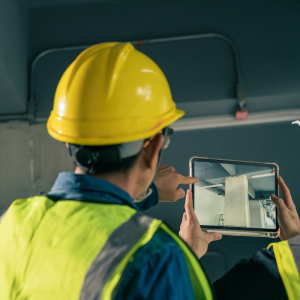 Since its introduction to the industry, laser scanning technology has revolutionized project execution, streamlined workflows, and enhanced accuracy across operations. Fast forward to 2025, and this technology has only grown more sophisticated. Engineering firms, such as McNeil Engineering, are continually adopting cutting-edge laser scanning systems to redefine project design, planning, and management. Let’s explore how current advances in laser scanning technology are shaping the industry.
Since its introduction to the industry, laser scanning technology has revolutionized project execution, streamlined workflows, and enhanced accuracy across operations. Fast forward to 2025, and this technology has only grown more sophisticated. Engineering firms, such as McNeil Engineering, are continually adopting cutting-edge laser scanning systems to redefine project design, planning, and management. Let’s explore how current advances in laser scanning technology are shaping the industry.
What is Laser Scanning Technology?
Laser scanning, often referred to as LiDAR (Light Detection and Ranging), is a method of capturing physical spaces in the form of highly precise three-dimensional digital models. Using laser beams, these systems measure distances to create detailed point clouds that represent surfaces and structures. The result is incredibly accurate data that can be integrated into Building Information Modeling (BIM), CAD systems, and other tools for design and analysis.
In 2025, laser scanning devices have become smaller, faster, and more versatile. Autonomous drones outfitted with laser scanners now capture data remotely, increasing accessibility to hard-to-reach areas. Moreover, innovations in AI-backed analysis tools have enabled engineering firms to process and interpret scanned data faster than ever before.
Enhanced Precision in Design and Planning
One of the most significant advancements in modern laser scanning technology is its ability to capture data with millimeter-level accuracy. This precision ensures that engineering projects align with design specifications and minimizes costly errors during construction.
For example, laser scanning in 2025 allows McNeil Engineering to perform highly accurate site surveys within hours, compared to the days or weeks required with traditional methods. By documenting exact conditions, engineers and architects can design structures that seamlessly integrate into their environments, avoiding topographical surprises and ensuring smooth project execution.
Speed and Efficiency with Autonomous Scanners
Gone are the days of slow, manually operated scanners. Today’s laser scanning systems are faster, more portable, and often autonomous. Drones equipped with LiDAR sensors are becoming indispensable for projects requiring aerial data collection. These autonomous systems easily navigate hazard-prone or inaccessible areas, reducing safety risks and exponentially speeding up project timelines.
At McNeil Engineering, aerial laser scanning has revolutionized large-scale civil projects such as bridge construction, highway repairs, and landscaping. By collecting high-resolution images of vast terrain, these drones process detailed analysis in a fraction of the time needed with traditional surveying methods, allowing projects to move forward quickly and confidently.
Integration with BIM and AI-Driven Insights
One of the most notable advancements in 2025 is how seamlessly laser scanning integrates with Building Information Modeling (BIM). Engineers can now create dynamic, interactive 3D models that provide stakeholders a clear understanding of a project’s physical and functional characteristics.
Additionally, AI-powered analysis tools in the latest laser scanning software make data interpretation more intuitive. These systems use machine learning algorithms to detect patterns, identify inconsistencies, and flag potential risks. For McNeil Engineering, these advancements help streamline problem-solving, allowing the team to proactively address challenges before they escalate.
Applications Across Diverse Projects
The versatility of laser scanning extends across various sectors in engineering. From structural assessments and renovations to landscaping and urban planning, laser scanning has become a vital asset for firms handling diverse projects. Its ability to collect detailed data is particularly beneficial for older structures undergoing restoration or modernization. Scanning these sites provides insight into hidden structural challenges, ensuring project decisions are well-informed.
For McNeil Engineering, such advancements have elevated consulting services for roofing and paving projects. Using cutting-edge laser scanners, the team can detect minute surface variations, identify vulnerabilities, and propose more durable solutions—all faster and more accurately than ever before.
Sustainability Through Resource Efficiency
Advances in laser scanning technology also contribute to sustainability. By reducing the need for repeated on-site visits, the energy and time expended on projects decreases drastically. Additionally, fewer errors during construction mean less material waste, cutting back on environmental impact.
In line with McNeil Engineering’s commitment to sustainable practices, the firm uses 2025’s state-of-the-art scan-to-model systems to optimize resource consumption, minimize carbon footprints, and develop eco-friendly designs that stand the test of time.
The Future for Engineering Firms
As we settle into 2025, engineering firms can undoubtedly expect even greater innovations in laser scanning technology. Enhanced mobility, improved AI analysis, and augmented reality (AR) integration are just a few areas poised for further development. These advances will continue to empower engineers to push boundaries, create efficient workflows, and deliver groundbreaking solutions to meet the needs of tomorrow.
At McNeil Engineering, laser scanning is more than just a tool—it’s a core part of our commitment to cutting-edge innovation. By harnessing the power of this technology, we continue to redefine industry standards and deliver projects that are precise, sustainable, and impactful.
Looking to elevate your next project with transformative technology? Contact McNeil Engineering today and see how laser scanning can make your vision a reality!
